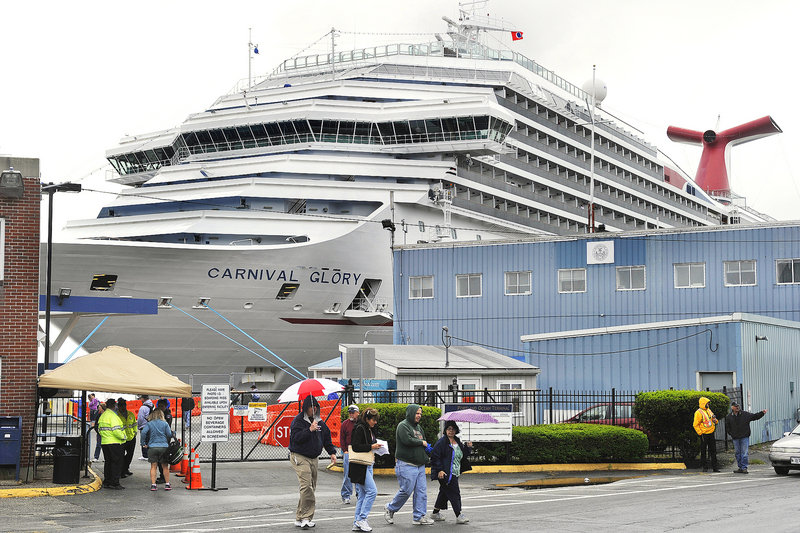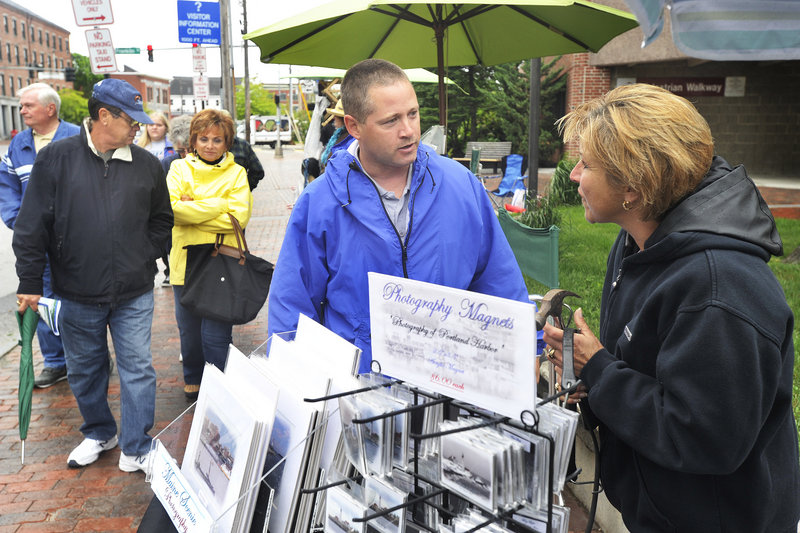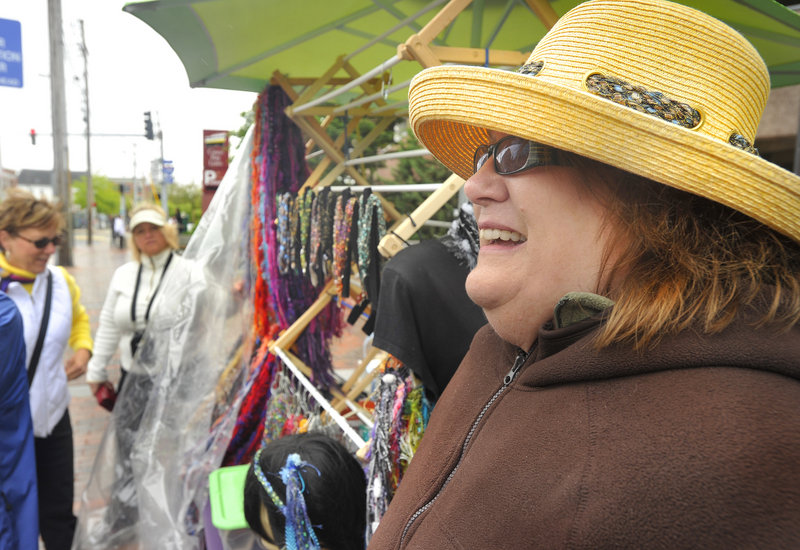PORTLAND — City officials took to the waterfront Tuesday morning to ensure that street vendors who looked to capitalize on the city’s first major cruise ship of the season weren’t creating a public hazard with their displays.
Code Enforcement Officer Chuck Fagone and city attorney Ann Freeman visited the vendors near the Portland Ocean Terminal, where the Carnival Glory was docked.
Their goal was not to punish, but to educate vendors about the rules.
“We’re going to try and work with people,” Freeman said as Fagone handed out copies of the rules to vendors. “The rules are pretty clear.”
Last year, pedestrians and merchants complained that vendors were blocking sidewalks around the terminal, forcing people to walk in the street. The city responded by limiting the number of vendors, allowing artists – who are protected by the First Amendment – to stay and forcing craftspeople to leave.
That hard line thrust the city into an age-old debate: What is art?
The debate culminated in a tense public hearing at Merrill Auditorium’s rehearsal hall and the formation of a task force to study the issue.
This year, the city is taking a different tack, not focusing on the what-is-art debate. The study group said the city should enforce the objective standards already in its ordinance. Each vendor can have as much as 12 square feet of display space while leaving at least 4 feet of sidewalk space for pedestrians. Vendors cannot set up on city structures.
That approach was welcomed by Gail Huhtamaki, a fiber artist from Wells who was twice told to leave the vending area last year. The reason?
“My work did not fit the city attorney’s definition of art that is protected by the First Amendment,” Huhtamaki said.
Bruce Meader, a longtime vendor from Saco, said he understands the need to set limits on vendors. While only six of them were on the waterfront Tuesday morning, he said as many as 30 set up in the fall, the peak cruise season.
“There were some that were certainly over that (table size limit) by a lot,” said Meader, who sells handmade starfish ornaments, prints and DVDs of photographs of southern Maine.
Two vendors were technically out of compliance Tuesday, but not egregiously so.
Tara Michaud, a Scarborough native who was selling photographs, Christmas ornaments and magnets, had a small table next to a larger, 6-foot-by-2-foot table, exceeding the 12-square-foot limit.
Skip Estes of Auburn, who set up as a vendor for the first time, was also out of compliance. He placed two poles in the grass off the sidewalk to showcase his “L.L. Bird” houses, which incorporate Bean boots.
Neither vendor was required to remove their setup.
“We’re not going to make them go home today,” Freeman said.
Freeman said she expects a team of city officials to make periodic walk-throughs when large cruise ships come to port – and whenever the city gets a complaint.
Jennifer Hutchins, executive director of Creative Portland Corp. and the chairwoman of the task force that studied the issue, said the group is making a brochure with maps outlining vending areas, at the cruise ship terminal, and at farmers markets in Monument Square and Deering Oaks.
“We’re hoping that, by being proactive in outlining what the rules are, it will be easier for people to comply,” Hutchins said.
Huhtamaki, who said she was “cautiously optimistic” about the new approach before city officials stopped by, seemed pleased with the results.
“I think it’s great (the city is) doing this,” she said. “It’s nerve-wracking to come down here every day and wonder if you will be asked to leave.”
Staff Writer Randy Billings can be contacted at 791-6346 or at: rbillings@mainetoday.com
Twitter: @randybillings
Copy the Story Link
Send questions/comments to the editors.





Success. Please wait for the page to reload. If the page does not reload within 5 seconds, please refresh the page.
Enter your email and password to access comments.
Hi, to comment on stories you must . This profile is in addition to your subscription and website login.
Already have a commenting profile? .
Invalid username/password.
Please check your email to confirm and complete your registration.
Only subscribers are eligible to post comments. Please subscribe or login first for digital access. Here’s why.
Use the form below to reset your password. When you've submitted your account email, we will send an email with a reset code.